Skydiving in Nepal is an unforgettable experience that blends the excitement of free fall with stunning vistas of the world’s tallest mountains. The adrenaline thrill of flying through the skies is only equalled by the breathtaking views of Everest and the surrounding peaks. Nepal has become an adventure hotspot, attracting extreme sports enthusiasts and first-time jumpers. Whether you’re a seasoned skydiver or a first-timer, skydiving in Nepal offers a memorable thrill and a visual spectacle unlike any other.
Factors That Affect Skydiving In Nepal
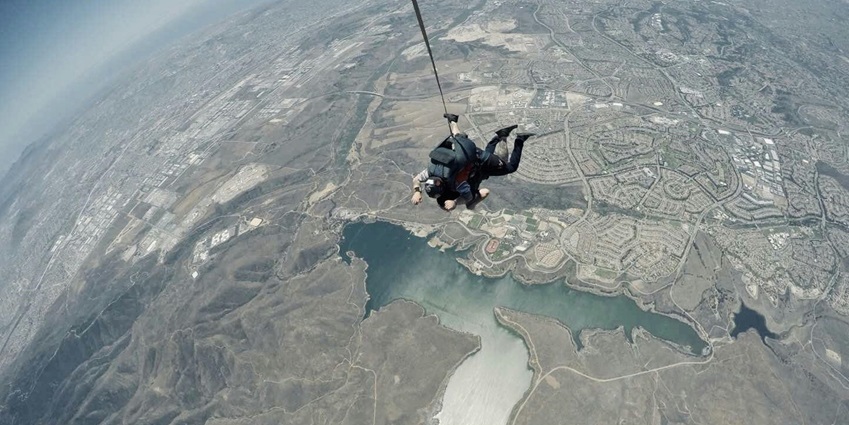
Photo: Henry Li / Pexels / Image For Representation Only
Skydiving in Nepal is an exciting journey impacted by various circumstances, so it’s essential to understand the significant aspects that will affect your experience.
- Altitude: The high altitude in Nepal considerably improves the skydiving experience, providing stunning vistas of the world’s highest peaks and a unique viewpoint from above.
- Weather Conditions: Favourable weather conditions are essential for safe and pleasurable skydiving; clear skies and moderate winds guarantee a smoother fall and greater visibility of the breathtaking Himalayan scenery.
- Safety Protocols: Strict safety protocols are required to reduce hazards and guarantee a safe dive, including thorough equipment checks and adherence to set rules.
- Physical Fitness: Being physically fit is essential for skydiving since it allows you to withstand the pressures of free fall and manage the landing.
Suggested Read: Top Places To Visit In Nepal For Couples
Levels Of Skydiving In Nepal
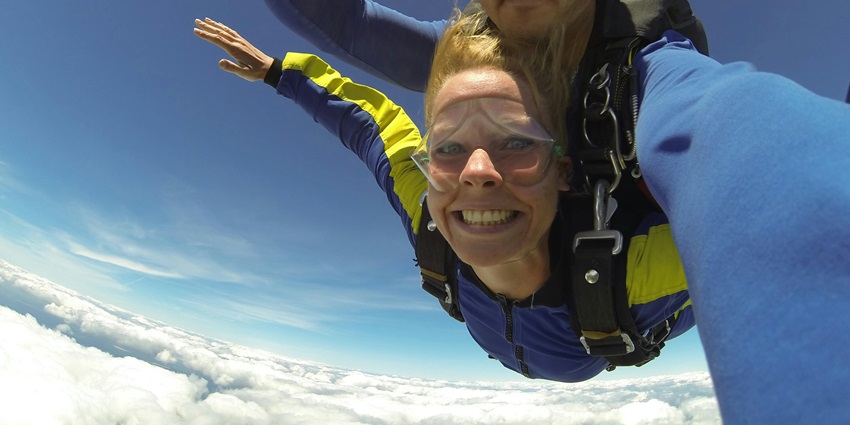
Photo: Russ Jani / Pexels / Image For Representation Only
Skydiving in Nepal provides a variety of experiences for beginners and expert skydivers. Here are the levels of skydiving:
Tandem Skydiving: Tandem skydiving provides a thrilling introduction to the sport, ideal for novices. In this experience, you are safely strapped to a trained instructor, allowing you to experience the exhilaration of freefall without requiring substantial training. The instructor supervises the jump, including parachute deployment and fall guidance, while you enjoy the fantastic vistas of the Himalayas. Tandem skydiving offers a memorable journey in one of the world’s most breathtaking locales, with safety as the primary concern.
Solo Skydiving: Solo skydiving is a more sophisticated experience suitable for individuals who have received training and certification. Unlike tandem skydiving, solo jumps require the skydiver to man the whole jump unaided, from departing the plane to deploying the parachute and managing the fall. It is thrilling because it provides complete control and independence, immersing yourself in the fantastic vistas of Nepal’s landscapes, especially the beautiful Himalayan range.
Static Line Jump: A Static Line Jump is a jump in which the parachute is deployed automatically by a static line tied to the airplane. As the skydiver departs the plane, the queue removes the parachute deployment bag from the container, starting the opening procedure. This approach is often used for novice training. It provides a safe way to experience skydiving by guaranteeing that the parachute opens at a predefined height, minimising the need for human deployment.
Top Popular Destinations For Skydiving In Nepal
Skydiving destinations in Nepal provide stunning vistas and one-of-a-kind experiences, ranging from the towering Himalayas to calm lakeside landscapes, making each place an unforgettable journey.
1. Pokhara
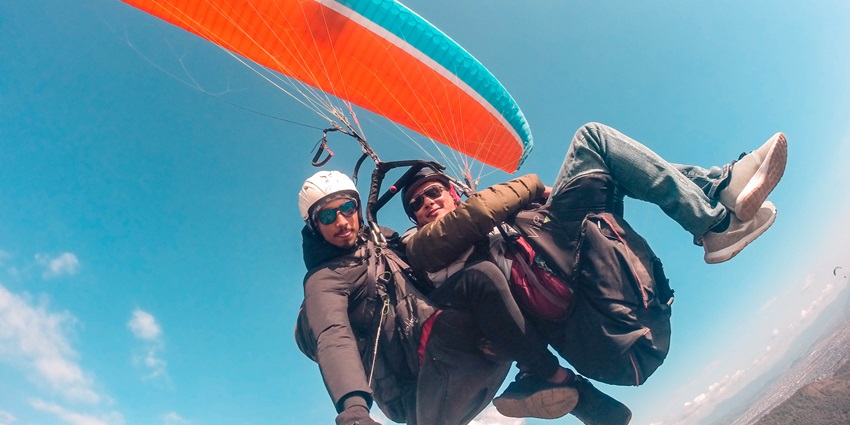
Photo: Nirmal Dulal / Wikimedia Commons
Pokhara is a top skydiving destination renowned for its breathtaking natural beauty. It provides an unmatched skydiving experience, nestled next to the tranquil Phewa Lake and surrounded by the spectacular Annapurna Mountains. Skydivers may take in stunning panoramic views of the Himalayas, lush green hills, and the quiet lake below. Pokhara’s pleasant weather and steady circumstances make it a perfect destination for new and seasoned jumpers.
Height: 10,000 to 15,000 feet (3,048 to 4,572 metres)
Duration: About 30 to 60 seconds of freefall, with a total jump time of 5 to 7 minutes, including the descent under the parachute
Suggested Read: Things To Do In Kathmandu
2. Everest Region
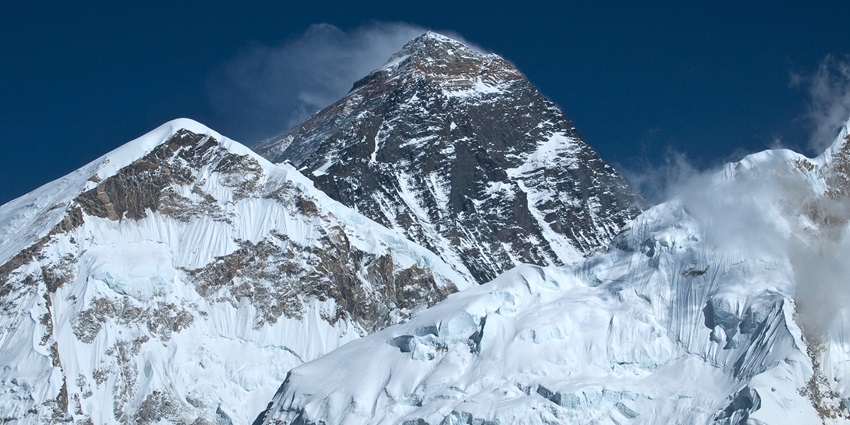
Photo: Vyacheslav Argenberg / Wikimedia Commons
The Everest Region, known for its breathtaking views, is Nepal’s leading skydiving destination. Skydiving here provides a once-in-a-lifetime opportunity to soar over the world’s highest peak, Mount Everest, and its surrounding Himalayan giants. The stunning vistas of the snow-capped mountains and broad valleys offer an unforgettable journey. The high altitude and beautiful landscape make each leap a memorable experience. Due to the problematic circumstances, skydiving in this location is best suited to experienced jumpers.
Height: 20,000 to 25,000 feet (6,096 to 7,620 metres)
Duration: Around 60 to 90 seconds of freefall, with a total jump time of approximately 7 to 10 minutes, including the parachute descent
3. Nagarkot
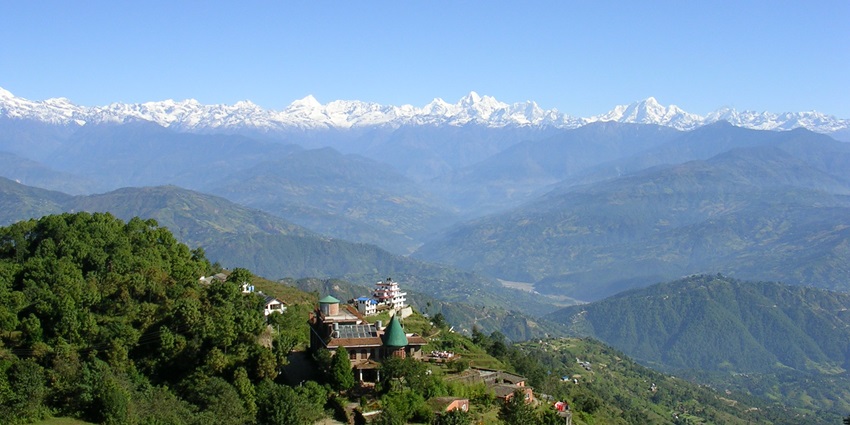
Photo: Sherparinji / Wikimedia Commons
Perched at an elevation of around 2,195 metres, Nagarkot offers panoramic views of the Himalayas, including the beautiful peaks of the Langtang and Ganesh Himal ranges. The bright skies and quiet setting make it an ideal spot for skydiving, providing a unique view of Kathmandu Valley and the surrounding hills. The proximity of Nagarkot to the capital and its natural beauty make it an accessible and memorable destination for skydivers looking for adventure and stunning scenery.
Height: Approximately 10,000 feet (3,048 metres)
Duration: Around 30 to 60 seconds of freefall, with a total jump time of 5 to 7 minutes, including the descent under the parachute
Suggested Read: Amazing Things To Do In Kathmandu In July During Monsoon
4. Kathmandu
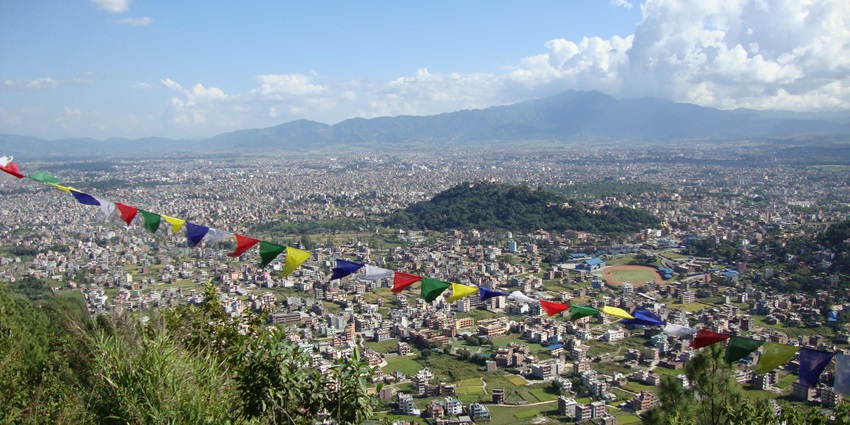
Photo: Ananda Raj Devkota / Wikimedia Commons
Kathmandu, Nepal’s dynamic capital, provides an unforgettable skydiving experience amidst its busy cityscape and surrounding hills. Skydivers may enjoy magnificent views of Kathmandu Valley from above, including historic temples, colourful roofs, and beautiful hills. The city’s elevation and diversified environment create a dramatic background for a fantastic leap. Kathmandu’s accessibility and rich cultural ambience enhance the trip, making it an appealing option for anyone seeking to combine the thrill of skydiving with the excitement of visiting a bustling metropolitan setting—the combination of urban and natural beauty results in an unforgettable and diversified skydiving experience.
Height: Approximately 10,000 feet (3,048 metres)
Duration: About 30 to 60 seconds of freefall, with a total jump time of around 5 to 7 minutes, including the parachute descent
5. Bandipur
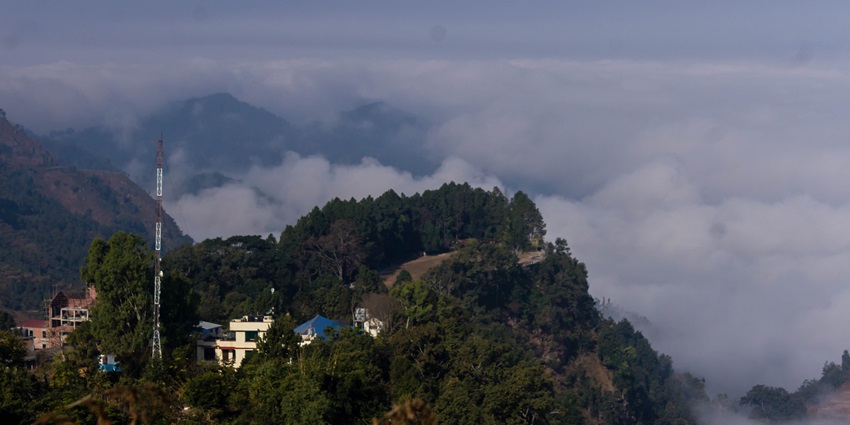
Photo: Bijay Chaurasia / Wikimedia Commons
Bandipur, a scenic hill town in Nepal, provides a unique and tranquil skydiving experience. At an elevation of around 1,030 metres, it offers breathtaking aerial views of the surrounding valleys, lush woods, and distant Himalayan peaks. Bandipur, known for its protected cultural history and lovely environment, provides a peaceful alternative to more crowded destinations. The open skies and mild weather conditions make it a perfect location for skydiving, with magnificent natural beauty and tranquil surroundings.
Height: Approximately 10,000 feet (3,048 metres)
Duration: Around 30 to 60 seconds of freefall, with a total jump time of approximately 5 to 7 minutes, including the parachute descent
Suggested Read: Amazing Places To Visit In Lumbini
Best Time For Skydiving In Nepal
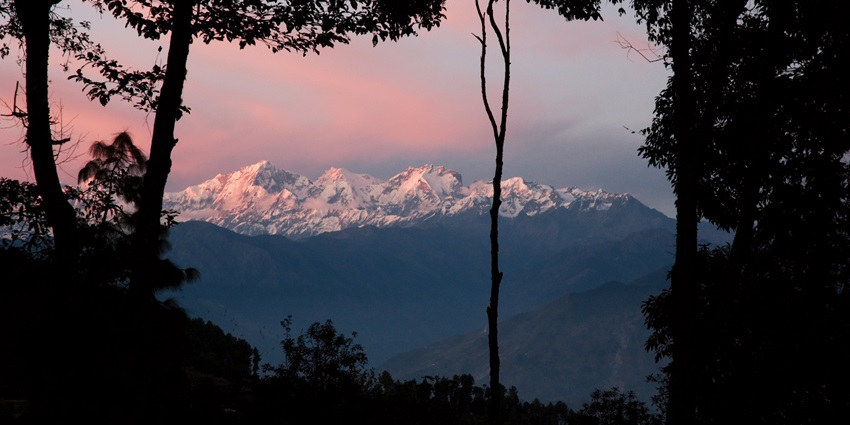
Photo: Julesair / Wikimedia Commons
The best time for skydiving in Nepal is during the dry season, which lasts from September to April. This time of year gives skydivers ideal visibility and safety due to consistent weather conditions, clear skies, and low rainfall. October to November and February to March are exceptionally favourable, with milder temperatures and clear views of the Himalayan peaks. Conversely, the monsoon season, which lasts from June to August, brings significant rains and unpredictable weather, making skydiving less appealing owing to the risk of storms and poor visibility. Planning a jump during the dry season improves overall enjoyment and safety.
Price Of Skydiving In Nepal
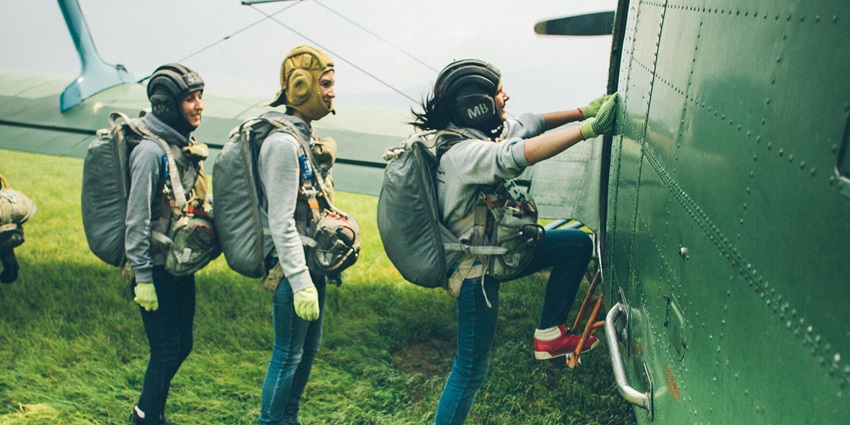
Photo: Dasha Klimova / Pexels / Image For Representation Only
The price of Skydiving in Nepal varies according to the location and kind of jump. In Pokhara, tandem skydiving costs roughly ₹20,000 (NPR 32,000), but solo and advanced jumps may cost more. Skydiving in the Everest Region is more expensive due to its exclusivity, often beginning at around ₹40,000 (NPR 64,000). Tandem skydives in Kathmandu cost roughly ₹15,000 (NPR 25,500), whereas Bandipur costs around ₹20,000 (NPR 32,000). These fees frequently include training, equipment, and transportation, ensuring a whole adventure experience.
Suggested Read: Places To Visit In Kathmandu
Skydiving in Nepal is a fantastic activity, with stunning views of the Himalayas and various jumping places suitable for all levels of expertise. Whether you select the tranquil heights of Pokhara, the renowned Everest Region, or the quaint Bandipur, each site provides a distinct and unforgettable experience. Indulge in a skydiving excursion by planning a trip to Nepal with TripXL to ensure a smooth and enjoyable experience.
Cover Photo: Ysmael pascual / Pexels / Image For Representation Only


 WhatsApp
WhatsApp
 Twitter
Twitter









